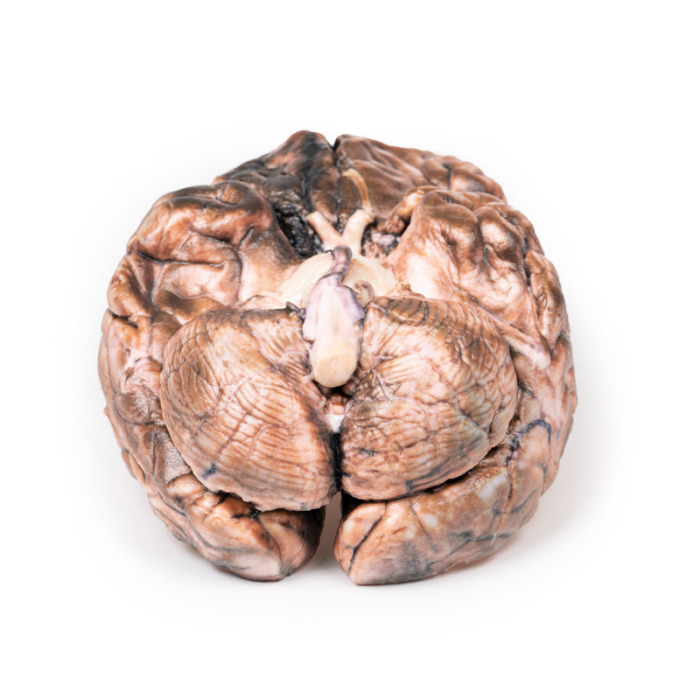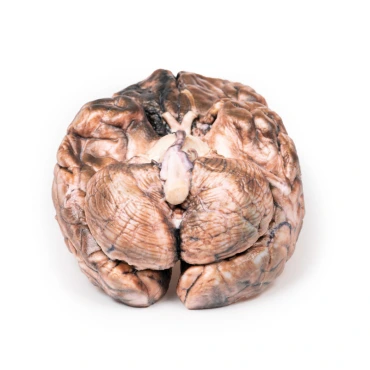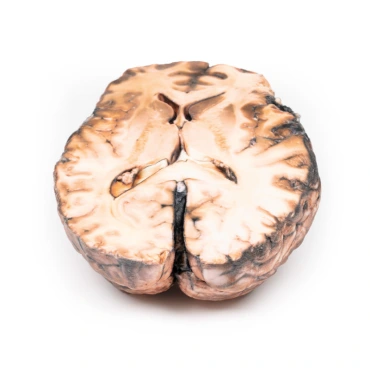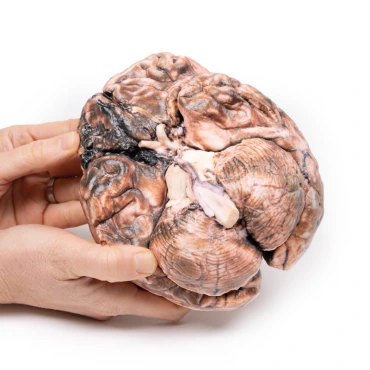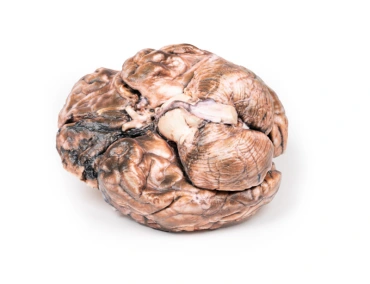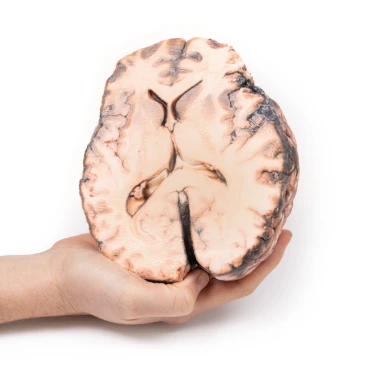MP2013 - Ruptured Berry Aneurism
By buying you get
381 Points
More than a purchase. You get service and expert advice. Ask which products and combinations are recommended for you.
Clinical History
Five days before admission this 38-year old female experienced the sudden onset of pain behind the right eye, associated with a slow development of weakness of the left leg. Examination disclosed left-hemiparesis in a confused hypertensive female. There was also a right homonymous hemianopia and a right VIth cranial nerve weakness. Clonus was present at ankle and knee on the left, and the left plantar reflex was upgoing. Lumbar puncture showed a raised pressure and the fluid was blood-stained. Angiography revealed an intracerebral aneurysm. This was clipped at operation but the day following operation the patient died suddenly.
Pathology
The specimen shows the basal surface of the brain. There is a saccular aneurism 5 mm in diameter at the junction of the right internal carotid and the posterior communicating artery, which has ruptured. There is subarachnoid blood in the immediate area in the cisterna magna and on the inferior surface of the right frontal lobe. There is a similar unruptured aneurysm on the left side. The right frontal lobe appears softer and more friable anteriorly
Further information
Aneurysms of the posterior communicating artery are the third most common Circle of Willis aneurysms, and can lead to compression and palsy of closely-located cranial nerves, such as the VIth in this case. The proximity of the ophthalmic division of the trigeminal nerve to the ruptured aneurysm may also in this patient explain the sudden onset of pain ‘behind the eye’. The visual field defect is most likely due to compression of the right optic tract. The clinical manifestations of stroke are a consequence of the territory of cerebral cortex whose vascular supply is compromised due to the ruptured aneurysm
- Quantitative unit
- ks
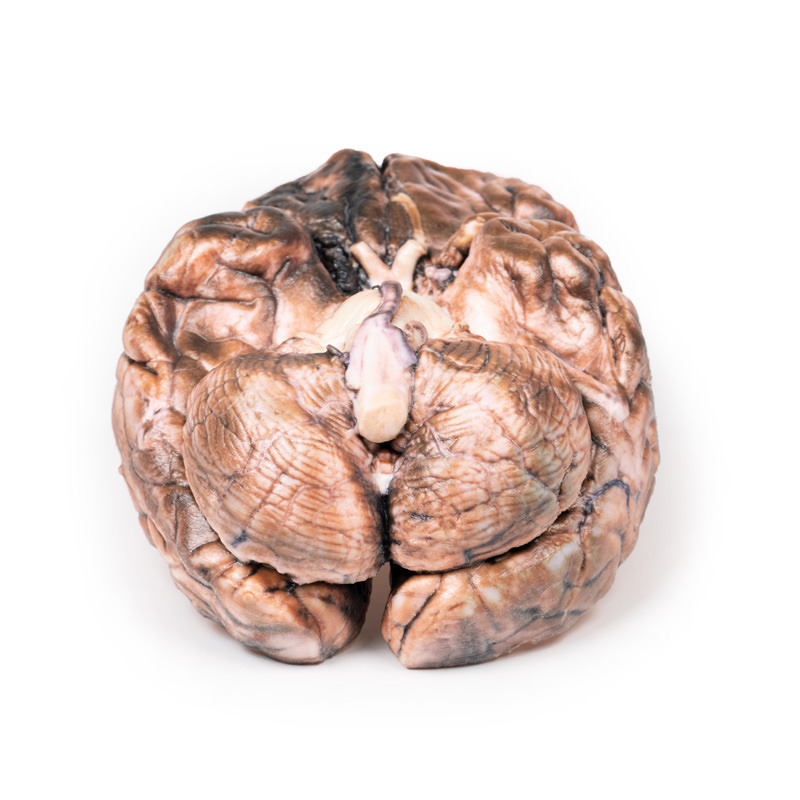
MP2013 - Ruptured Berry Aneurism
